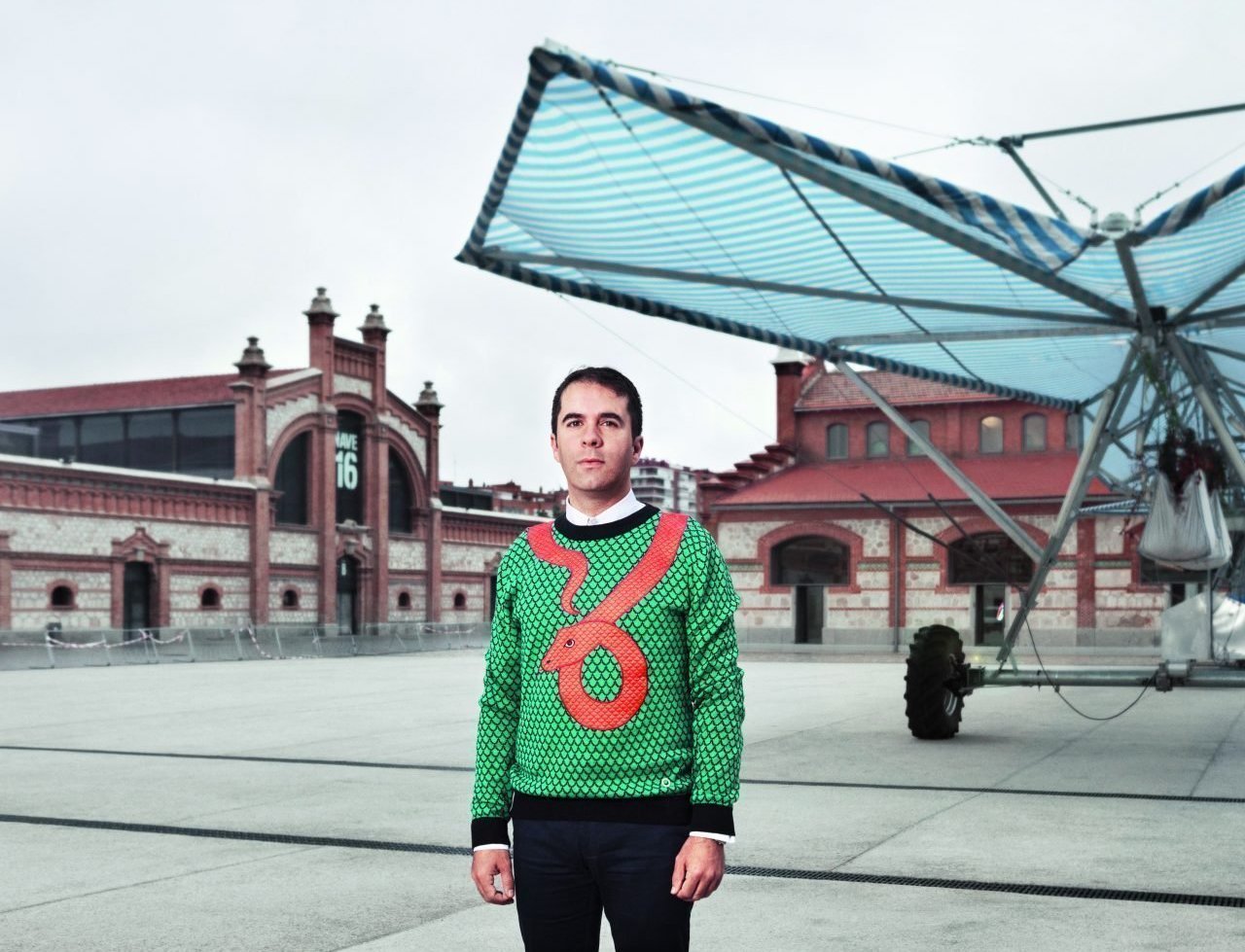Andrés Jaque on Queering Architecture
Andrés Jaque is the founder of Office for Political Innovation, a New York-based research firm that addresses architecture’s role in the formation of social structures. On the occasion of global Pride Month, Jaque discusses the importance of queer, non-normative perspectives in architecture, a profession with a long history of propagating the single narrative of the lone male genius.

We’ve been studying the effects of Grindr for a long time, particularly how in Western, developed cities, the status of gayness in urban societies has evolved. There’s been an effect of Grindr dealing with architecture to remove gayness from queerness and to present gayness as a new center of power, a new patriarchy in which well-educated, rich, highly consumer, conventional two-person couples of the same sex would gain respectability by assuming a big part of the normative alignments of capitalist societies.
We were tracking that work in a project called “Intimate Strangers,” which we presented at the London Design Museum [2016 exhibition “Fear and Love”]. We were asked to select one piece of design that we thought was relevant and critical at the same time. We thought: Grindr. It started as an emancipatory tool for gay men in remote locations to find other gay men in proximity. They could escape the difficulties of society’s patriarchal rejection of homosexuality and queerness. They could detect each other and construct a new, alternative network.
The fact was that it evolved into a lifestyle platform that was not catering to queerness, or to alternative ways of performing sex and identity. It turned into something that could regulate what was cool, not much in a political arena of difference but rather a place for consumption based normativity. It was streaming J.W. Anderson shows and casting hegemonic bodies of good-looking, young, healthy, kind of westernized—even if they’re multicultural—Los Angeles guys to model for Paper Magazine.

We could see that the number one place Grindr users would switch on their apps in cities like London or New York were coincident with areas that were once queer venues. This was where queer communities before, during, and after the AIDS crisis of the Reagan era were connecting by dancing. They were turned into areas where super-expensive, high-end apartment towers were built up. Those apartments became the scenarios of where the most desirable Grindr profiles were. People who were in the past getting together in great collectives to claim the empowerment of what was marginalized and disrespected, then wanting themselves to be described and desired in a normative, high-end life with a very simplified spectrum of what is possible. So we’re critical of the way Grindr moved from a queer space to one of reductive, high-end living.
The question is, how can architecture queerify things? How can it work as a practice of extending what is possible and avoiding and confronting normativity? Architecture now faces the challenge of doing high-end apartment towers and enjoying it, or really working to subvert these trends in societies and understanding its duty to create the spaces where other realities can converge.
The profession has a lot to learn from people like Isabelle Stengers and the way she would promote practices that could extend the realm of what is possible. She identified a reality that’s much more plural. There’s also Jack Halberstam, who for me is a big reference to a history of transgender thinkers and transactivists, people who are collecting and giving to the tradition of queer and trans thinking. He looks at architecture as an actor of normativity, an actor to produce polarized gender construction—constructions that are not a given, not coming from, let’s say, a priori natural conditions, but as a cultural construction, as a political reductionism.
What’s really beautiful is how he identities in popular culture, movies, furniture, and images circulating in the fashion magazines that are molded with subversions that are helping us understand that we can change our relationship with nature our relationship with gender. In a recent talk, Jaque identified the way in Gordon Matta-Clark would operate into existing buildings as tools to construct gender. Matta-Clark would be the actor, the center of the action with the heavy machinery. The action was energized. Halberstam is proposing what could be a way of deconstructing these gender constructions and to see Matta-Clark’s work from the perspective of the building, the materials produced from the deconstruction, and other perspectives that would challenge the dominant narrative of the solo artist imposing force on an existing structure—by penetrating it or using heavy machinery. It’s a very beautiful reading, expressive of degenderizing architecture.

Something is happening to architecture. The big issues that cities and spaces are facing cannot be addressed from one single perspective. We need to understand and develop projects that are multi-perspective. It’s a time of huge change. We have to learn how to work with others, something the relevance of the architecture practice depends on.
The question of queer space is more important than ever. Broader issues, for instance the climatic and natural crises, the growth of inequality, or the process of transformation of cities and the segregation and inequality embedded in that process, these are issues that are crucial for our times and put architecture at the center. They deal with infrastructure, they deal with housing, and they deal with the city itself. These things cannot be addressed by a single perspective.
— As told to SCI-Arc editors